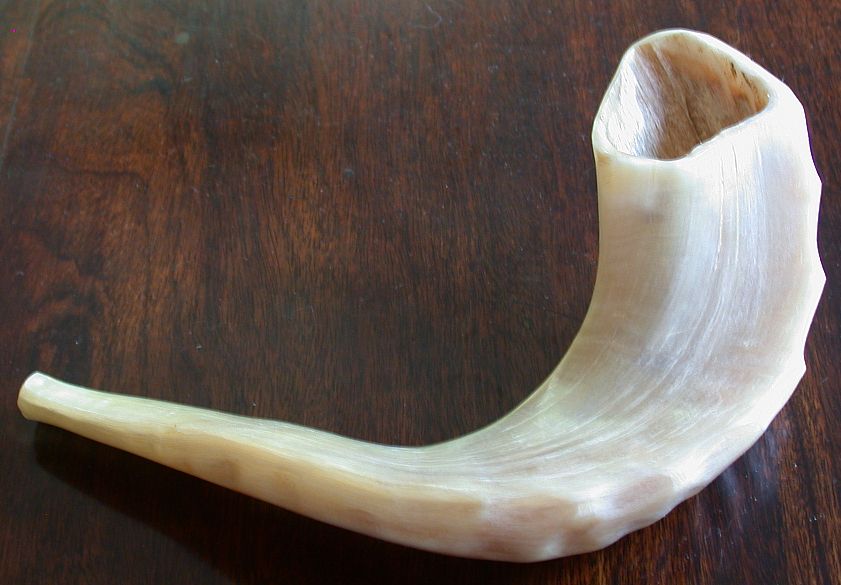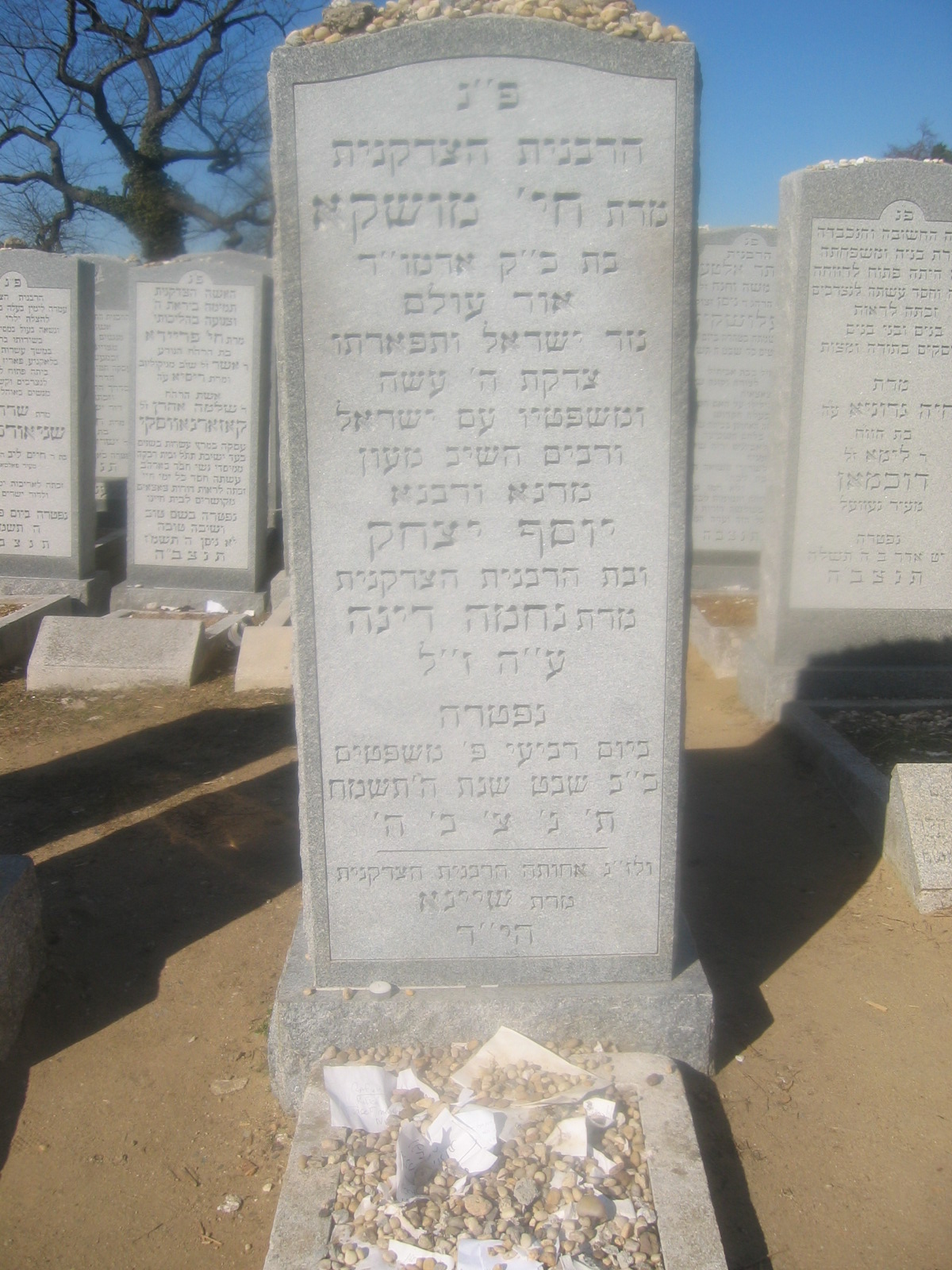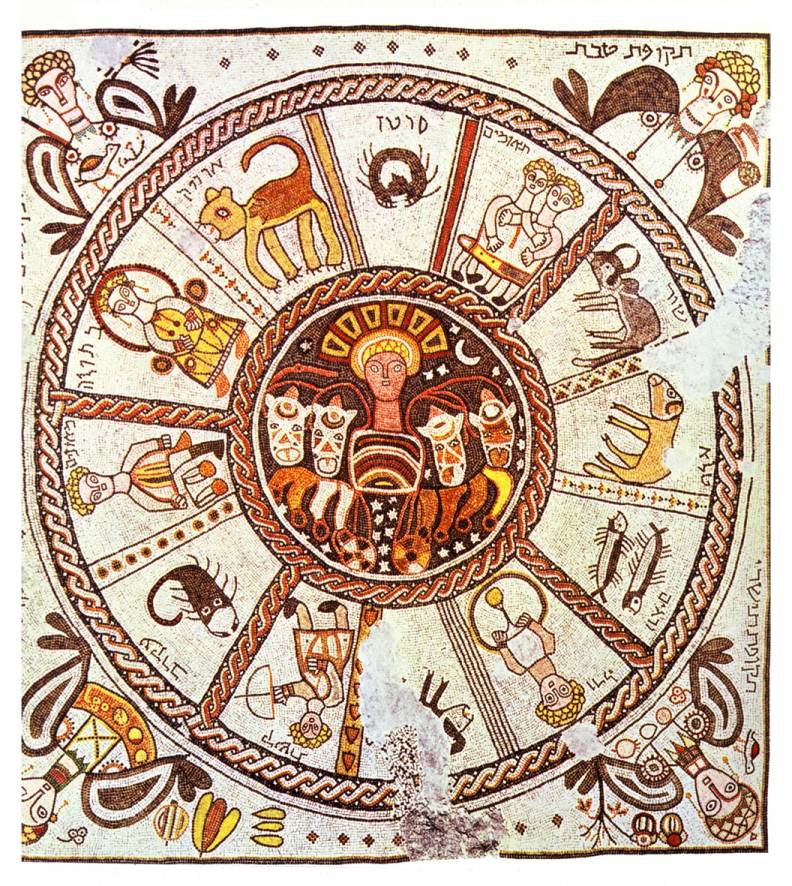|
Shevat
Shevat (, , ; from ) is the fifth month of the civil year starting in Tishre (or Tishri) and the eleventh month of the ecclesiastical year on the Hebrew calendar starting in Nisan. It is a month of 30 days. Shevat usually occurs in January–February on the Gregorian calendar. The name of the month was taken from the Akkadian language during the Babylonian Captivity. The assumed Akkadian origin of the month is , meaning "strike", that refers to the heavy rains of the season. In Biblical sources, the month is first mentioned by this name in the book of prophet Zechariah ( Zechariah 1:7). Holidays * 15 Shevat – Tu Bishvat In Jewish history and tradition *1 Shevat – Moses repeats the Torah (Deuteronomy 1:3) *2 Shevat (circa 1628 BC) – Asher born *10 Shevat (1950) - Death of the Previous Rebbe, the 6th Chabad Rebbe. *10 Shevat (1951) the Lubavitcher Rebbe formally accepts the leadership of the Chabad-Lubavitch movement by reciting the discourse "Bati Legani". *17- ... [...More Info...] [...Related Items...] OR: [Wikipedia] [Google] [Baidu] |
Tu Bishvat
Tu BiShvat () is a Jewish holiday occurring on the 15th day of the Hebrew month of Shevat. It is also called ''Rosh HaShanah La'Ilanot'' (), literally " New Year to the Trees". In contemporary Israel, the day is celebrated as an ecological awareness day, and trees are planted in celebration. Etymology The name ''Tu BiShvat'' is originally from the Hebrew date of the holiday, which occurs on the fifteenth day of Shevat. "Tu" stands for the Hebrew letters Tet and Vav, which together have the numerical value of 9 and 6, adding up to 15. The date may also be called "Ḥamisha Asar BiShvat" (, 'Fifteenth of Shevat'). Talmud Tu BiShvat appears in the Mishnah in Tractate Rosh Hashanah as one of the four new years in the Jewish calendar. The discussion of when the New Year occurs was a source of debate among the rabbis, who argued: * The first of Nisan is the "new year for kings and festivals". * The first of Elul is the "new year for the tithe of cattle"; the tannaim Eleazar ... [...More Info...] [...Related Items...] OR: [Wikipedia] [Google] [Baidu] |
Asher
Asher ( ''’Āšēr''), in the Book of Genesis, was the younger of the two sons of Jacob and Zilpah, and Jacob's eighth son overall. He was the founder of the Israelite Tribe of Asher. Name The text of the Torah states that the name אָשֵׁר ''Asher'' means "happy" or "blessing", implying a derivation from the Hebrew term ''osher'' in two variations: ''beoshri'' (meaning ''in my good fortune''), and ''ishsheruni''. The Bible states that at his birth, Leah exclaimed, "Happy am I! for the daughters will call me happy: so she called his name Asher", meaning "happy" (Genesis 30:13). Indeed, the name אָשֵׁר ''Asher'' is a typical Semitic name, deriving from the Hebrew root ''ʔ-š-r'' "to be happy" and the stative nominal stem. Biblical narrative Asher and his four sons and daughter settled in Canaan. On his deathbed, Jacob blessed Asher by saying that "his bread shall be fat, and he shall yield royal dainties" (Gen. 49:20). Moses said of Asher: "May Asher be bles ... [...More Info...] [...Related Items...] OR: [Wikipedia] [Google] [Baidu] |
Menachem Mendel Schneerson
Menachem Mendel Schneerson ( – June 12, 1994; Anno Mundi, AM 11 Nissan 5662 – 3 Tammuz 5754), known to adherents of the Chabad-Lubavitch movement as the Lubavitcher Rebbe or simply the Rebbe, was an American Orthodox rabbi and the most recent Rebbe of the Chabad, Lubavitch List of Hasidic dynasties and groups, Hasidic dynasty. He is considered one of the most influential Jewish leaders of the 20th century.Matt Flegenheimer"Thousands Descend on Queens on 20th Anniversary of Grand Rebbe’s Death", ''The New York Times'' As leader of the Chabad-Lubavitch movement, he took an insular Hasidic group that almost came to an end with the Holocaust and transformed it into one of the most influential movements in religious Jewry, with an international network of over 5,000 educational and social centers. The institutions he established include kindergartens, schools, drug-rehabilitation centers, care-homes for the disabled, and synagogues.Editorial, 07/08/14"Rebbe to the city and Reb ... [...More Info...] [...Related Items...] OR: [Wikipedia] [Google] [Baidu] |
Hebrew Calendar
The Hebrew calendar (), also called the Jewish calendar, is a lunisolar calendar used today for Jewish religious observance and as an official calendar of Israel. It determines the dates of Jewish holidays and other rituals, such as '' yahrzeits'' and the schedule of public Torah readings. In Israel, it is used for religious purposes, provides a time frame for agriculture, and is an official calendar for civil holidays alongside the Gregorian calendar. Like other lunisolar calendars, the Hebrew calendar consists of months of 29 or 30 days which begin and end at approximately the time of the new moon. As 12 such months comprise a total of just 354 days, an extra lunar month is added every 2 or 3 years so that the long-term average year length closely approximates the actual length of the solar year. Originally, the beginning of each month was determined based on physical observation of a new moon, while the decision of whether to add the leap month was based on observation ... [...More Info...] [...Related Items...] OR: [Wikipedia] [Google] [Baidu] |
Tevet
Tevet (Hebrew: , ''Ṭevet''; ; from Akkadian ) is the fourth month of the civil year and the tenth month of the ecclesiastical year on the Hebrew calendar. It follows Kislev and precedes Shevat. It is a month of 29 days. Tevet usually occurs in December–January on the Gregorian calendar. In the Babylonian calendar its name was Araḫ Ṭebētum, the "muddy month". Gregorian new year The Gregorian New Year's Day (1 January) nearly always occurs in this month. Only rarely will it occur in either of the two neighbouring months (Kislev or Shevat). Holidays * 25 Kislev – 2 Tevet – Hanukkah (or 3 Tevet if Kislev is short) * 10 Tevet – Tenth of Tevet (Asara beTevet), a fast day Community holidays * 5 Tevet is celebrated as a holiday by Chabad Hasidim, commemorating the 1987 verdict concerning an inheritance claim on the books of Rabbi Joseph Isaac Schneersohn. In Jewish history and tradition * 1 Tevet (circa 479 BC) – Esther was taken to King Achashverosh's pa ... [...More Info...] [...Related Items...] OR: [Wikipedia] [Google] [Baidu] |
Zechariah 1
Zechariah 1 is the first chapter of the Book of Zechariah in the Hebrew Bible or the Old Testament of the Christian Bible. This book contains the prophecies attributed to the prophet Zechariah. In the Hebrew Bible it forms a part of the Book of the Twelve Minor Prophets. As the first of the 14 chapters in the book, this chapter is a part of a section (so-called "First Zechariah") consisting of Zechariah 1- 8. It records an introduction and the first two of the eight visions received by the prophet. These visions are the book's primary and most distinctive feature, with a highly literary and standardized format, structured in a concentric pattern. Text The original text was written in the Hebrew language. This chapter is divided into 21 verses in English Bibles. There are some differences between the chapter and verse numbering of this chapter in English Bibles and in Hebrew texts: This article generally follows the common numbering in Christian English Bible versions, with no ... [...More Info...] [...Related Items...] OR: [Wikipedia] [Google] [Baidu] |
Chaya Mushka Schneerson
Chaya Mushka (Moussia) Schneerson (; March 16, 1901 – February 10, 1988), referred to by Lubavitchers as ''The Rebbetzin'', was the wife of Menachem Mendel Schneerson, the seventh and last rebbe (spiritual leader) of the Chabad-Lubavitch branch of Hasidic Judaism. She was the second of three daughters of the sixth Lubavitcher rebbe, Yosef Yitzchok Schneersohn. She was named after the wife of the third Lubavitcher rebbe, Menachem Mendel Schneersohn. Biography Early life She was born in Babinovichi, near the city of Lubavitch on Shabbat, the 25th of Adar of the year 5661 (March 16, 1901 ( NS); March 3, 1901 ( OS)). At the request of her grandfather, Sholom Dovber Schneersohn, she was named Chaya Mushka after her great great grandmother, the wife of Menachem Mendel Schneersohn. She lived in Lubavitch until the autumn of 1915 when due to World War I, she and her family fled to Rostov. In 1920, on the death of her grandfather, the fifth Lubavitcher rebbe, Sholom Dovbe ... [...More Info...] [...Related Items...] OR: [Wikipedia] [Google] [Baidu] |
Yosef Yitzchak Schneersohn
Yosef Yitzchak (Joseph Isaac) Schneersohn (; 21 June 1880 – 28 January 1950) was an Orthodox rabbi and the sixth Rebbe (spiritual leader) of the Chabad Lubavitch Hasidic movement. He is also known as the Frierdiker Rebbe (Yiddish for "Previous Rebbe"), the ''Rebbe RaYYaTz'', or the ''Rebbe Rayatz'' (an acronym for Rabbi Yosef Yitzchak). After many years of fighting to keep Orthodox Judaism alive from within the Soviet Union, he was forced to leave; he continued to conduct the struggle from Latvia, and then Poland, and eventually the United States, where he spent the last ten years of his life. Early life Yosef Yitzchak Schneersohn was born in Lyubavichi, Mogilev Governorate, Russian Empire (present-day Smolensk Oblast, Russia), the only son of Sholom Dovber Schneersohn (the ''Rebbe Rashab''), the fifth Rebbe of Chabad. He was appointed as his father's personal secretary at the age of 15; in that year, he represented his father in the conference of communal leaders in ... [...More Info...] [...Related Items...] OR: [Wikipedia] [Google] [Baidu] |
Adar
Adar (Hebrew: , ; from Akkadian ''adaru'') is the sixth month of the civil year and the twelfth month of the religious year on the Hebrew calendar, roughly corresponding to the month of March in the Gregorian calendar. It is a month of 29 days. Names and leap years The month's name, like all the others from the Hebrew calendar, was adopted during the Babylonian captivity. In the Babylonian calendar the name was Araḫ Addaru or Adār ('Month of Adar'). In leap years, it is preceded by a 30-day intercalary month named Adar Aleph (, ''aleph'' being the first letter of the Hebrew alphabet), also known as "Adar Rishon" (''First Adar'') or "Adar I", and it is then itself called Adar Bet (, '' bet'' being the second letter of the Hebrew alphabet), also known as "Adar Sheni" (''Second Adar'') or "Adar II". Occasionally instead of Adar I and Adar II, "Adar" and "Ve'Adar" are used (Ve means 'and' thus: And-Adar). Adar I and II occur during February–March on the Gregorian calendar. ... [...More Info...] [...Related Items...] OR: [Wikipedia] [Google] [Baidu] |
Jewish Astrology
Astrology in Jewish antiquity () is the belief that celestial bodies can influence the affairs of individuals and of entire nations upon the earth. This involves the study of the celestial bodies' respective energies based on recurring patterns that change by the hour, by the week, month, year or by several years (time categories). In each of these time categories one of the seven planetary spheres, or what are known as the seven classical planets: the Sun, Venus, Mercury (planet), Mercury, the Moon, Saturn, Jupiter, or Mars, along with the month's current Zodiac constellation, come into play and influence the sublunary world. At times, it involves a complex combination of several of these factors working together. In Judaism this belief is expressed by the biblical affirmation: "Do you know the laws of heaven / Or impose its authority on earth?" (Job 38:33), from which statement the Sages of Israel have inferred, "There is no single herb below without its corresponding star above ... [...More Info...] [...Related Items...] OR: [Wikipedia] [Google] [Baidu] |
Magha (month)
Magha () is the eleventh month of the Hindu calendar, corresponding to January/February of the Gregorian calendar. In India's national civil calendar, Magha is also the eleventh month of the year, beginning on 20 January and ending on 18 February. In the Hindu lunisolar calendar, Magha may begin on either the new moon or the full moon around the same time of year. It is named thus because in this month, the full moon is usually found nearby or within the star cluster called Magha. Since the traditional Hindu calendar follows the lunar cycle, Magha's start and end dates vary from year to year, unlike the months of the Hindu solar calendars. Magha is a winter ( Shishira Ritu) month. The lunar month of Magha overlaps with the solar month of Makara, which begins with the Sun's entry into Capricorn. Festivals * Shukla Panchami: Vasant Panchami * Shukla Saptami: Ratha Saptami * Maagh Mela is an important festival celebrated by most of North India. * The world-famous "Maha ... [...More Info...] [...Related Items...] OR: [Wikipedia] [Google] [Baidu] |
Arabic
Arabic (, , or , ) is a Central Semitic languages, Central Semitic language of the Afroasiatic languages, Afroasiatic language family spoken primarily in the Arab world. The International Organization for Standardization (ISO) assigns language codes to 32 varieties of Arabic, including its standard form of Literary Arabic, known as Modern Standard Arabic, which is derived from Classical Arabic. This distinction exists primarily among Western linguists; Arabic speakers themselves generally do not distinguish between Modern Standard Arabic and Classical Arabic, but rather refer to both as ( "the eloquent Arabic") or simply ' (). Arabic is the List of languages by the number of countries in which they are recognized as an official language, third most widespread official language after English and French, one of six official languages of the United Nations, and the Sacred language, liturgical language of Islam. Arabic is widely taught in schools and universities around the wo ... [...More Info...] [...Related Items...] OR: [Wikipedia] [Google] [Baidu] |





